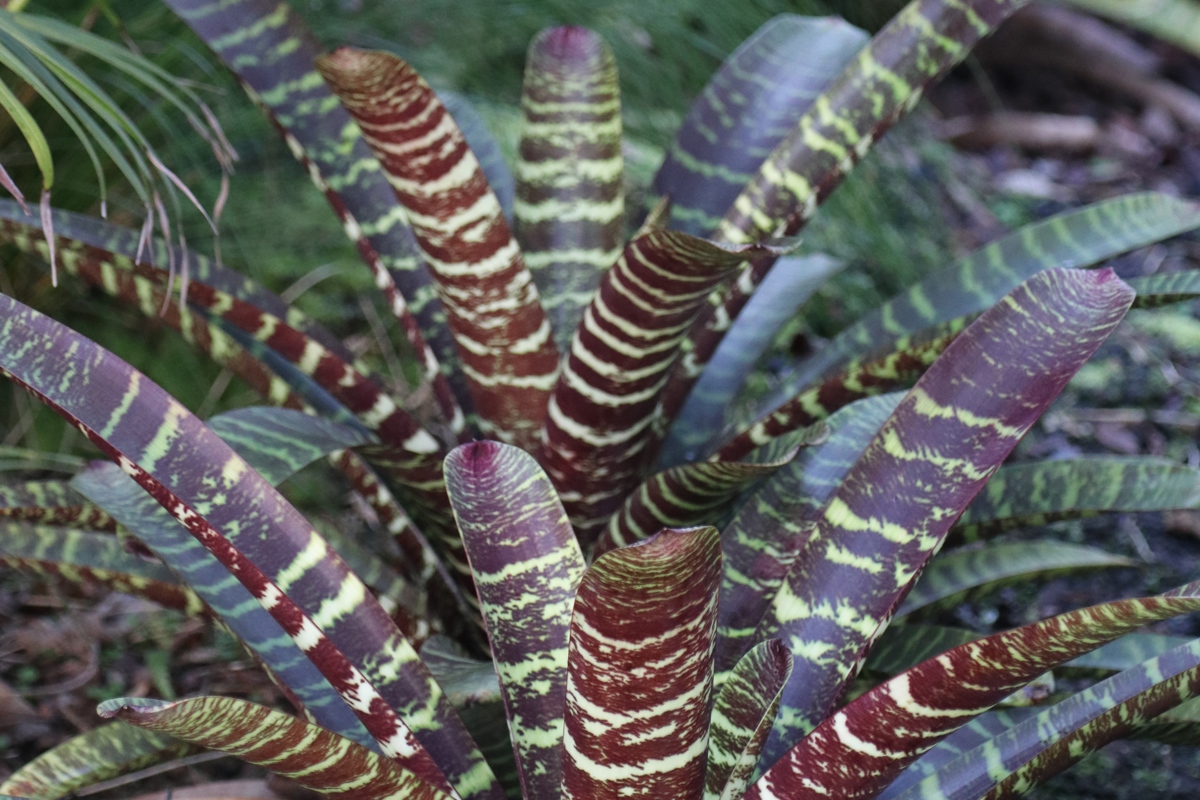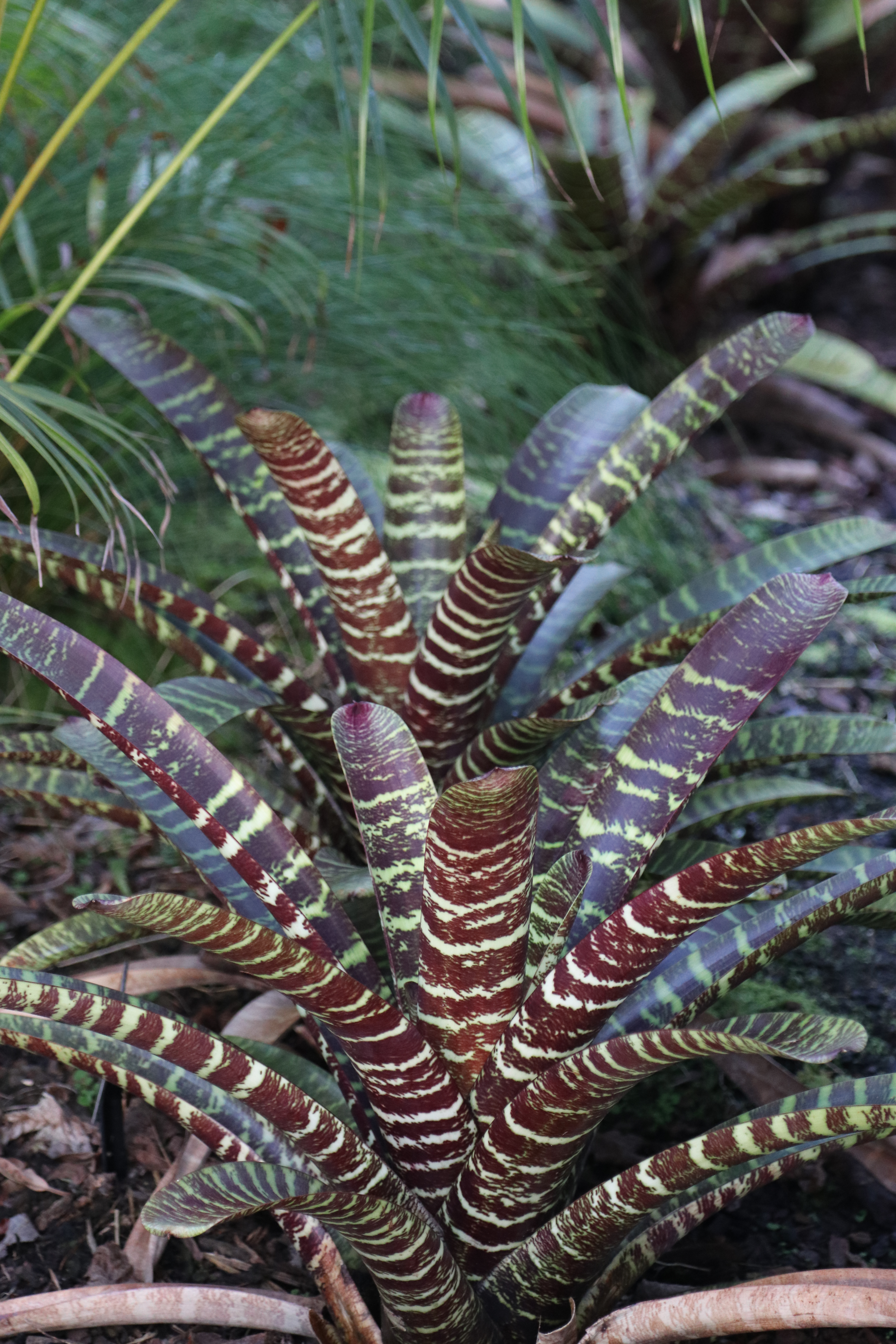Physical characteristics
An
Flowers and foliage
Rosettes of broad bronze/
This Vriesea seldom flowers but when it does it produces a
Preferred site
Best planted in light shade, and in free draining soil or potting mix. Shelter from strong winds. Tolerates mild frost and
Preparation for planting
Always choose healthy well grown
Before planting ensure the root ball is saturated and remove the planter bag or pot with minimal root disturbance. Trim any broken roots and plant at the same level as in the container. Dig a hole twice the diameter of the root ball and firm in and water once planted. Make sure
All bromeliads require good drainage and a loose porous soil and good air movement. To improve soil conditions you can mix copious quantities of orchid potting mix, coarse and fine bark, and untreated sawdust to make an ideal planting medium.
Because bromeliads have the central water tank between their leaves, after planting they need little or no further fertiliser as they gather all the nutrients they require from the insects and leaf matter that falls into the water and decays. Once the decaying process has started all the nutrients are absorbed into the water and then the plant itself.
Maintenance tips
Mulching
The first summer and autumn after planting are critical for young
On the whole bromeliads are low maintenance
Ecological and biodiversity benefits
Provides habitat for frogs and invertebrates in the water tank in the centre of the plant.
Pests and diseases
Scale thrips mealybugs may be a problem. Mosquito larvae are often resent in the central tank if the water is stagnant. These
Location at Auckland Botanic Gardens
TBC
Interesting facts and tips
In their natural habitat bromeliads typically grow as ephiphytes (on




.jpg?width=1200&height=1200&v=1d4024dceb89e50)

.jpg?width=1200&height=1200&v=1d5569224d63650)
 .jpg?width=1200&height=1200&v=1d4024df6ce2770)
.jpg?width=1200&height=1200&v=1d55676a892f2b0)
 .jpg?width=1200&height=1200&v=1d4024e3b65f7f0)